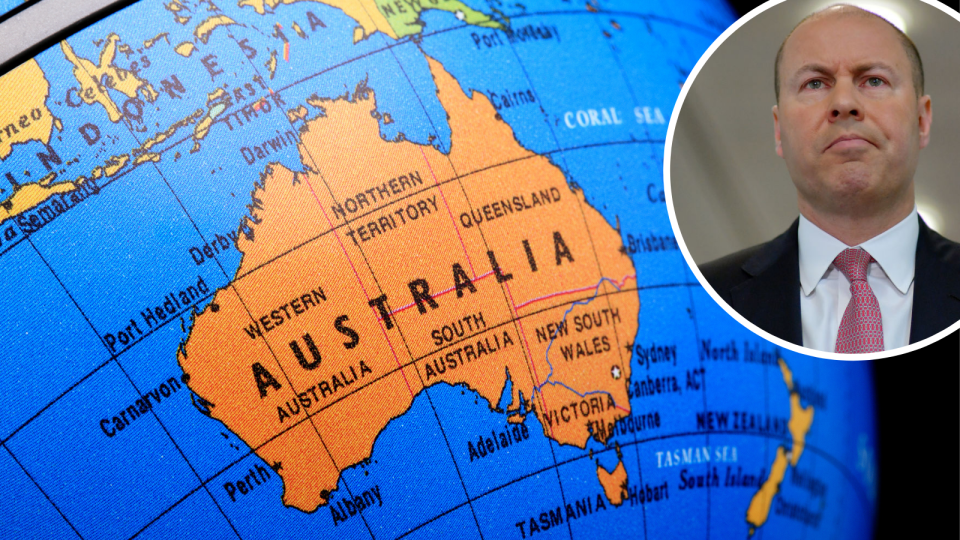Australian economy passes low point – but how strong will recovery be?

The relatively good news on the economy keeps coming.
Just a few months ago, things were grim. The economy was in free-fall - there were few if any signs of a material recovery. House prices were falling, the labour market was it tatters, stock prices were soggy and business and consumer sentiment were only just off the April and May lows.
At the same time, the RBA was dithering on monetary policy and the government was scaling back its stimulus measures.
Not many people were upbeat about the outlook.
Fast forward to today.
While economic output and jobs in Australia remain well below the level prevailing prior to the emergence of Covid-19, there is a clear turning point in a raft of economic indicators.
More from The Kouk:
GDP rose 3.3 per cent in the September quarter and a similarly sizeable rise is on the cards for the December quarter given the opening up of Victoria, the relaxation of most domestic border restrictions and a winding back of social gathering rules in most jurisdictions.
Employment, hours worked and payrolls are trending up as many of the unemployed and those working near zero hours are being reengaged by their employers.
While the unemployment and underemployment rates are still disturbingly high, they are falling faster than most credible forecasters were anticipating and could yet surprise by falling further on the back of the opening up of the domestic economy.
At the same time, house prices are now rising and the stock market has locked in solid gains, factors that will boost confidence and wealth. These conditions are vitally important for a sustained lift in consumer spending into 2021.
The various measures of business confidence and consumer sentiment have risen in the past few months and are consistent with a robust recovery.
While these measures are fickle and can quickly reverse, for now they are pointing to better economic conditions.
Internal data from a number of the big banks shows that consumer spending is picking up, buoyed also by booming ‘Black Friday’ sales. These ‘soft’ indicators are likely to show up in solid growth in retail and other consumer spending in the December quarter.
Other indicators are also more positive.
Building approvals are up as are the various measures of job vacancies. Motor vehicle sales are finding some base as consumers and business ramp up their spending and investment.
At the same time, housing finance is buoyant and the current low level of business inventories will be replenished in the quarters ahead which will add to economic growth in the next six months or so.
Not out of the woods
To be sure, there are many reasons to remain cautious, even anxious, about the economic outlook. The government is about to embark on the biggest tightening in fiscal policy on record with spending due to be cut by a staggering 17.5 per cent in real terms in 2021-22.
There are still many mortgages that are not being serviced and the global economy is at risk from fresh Covid-19 lock downs in many countries.
At the same time, the escalation of the trade dispute with China is threatening to hurt the export market for important sectors of the Australian economy.
It remains the case that wages growth remains in the doldrums and this is still likely to act as a brake on the recovery in household spending which in turn will keep inflation below the RBA target for some considerable time.
It all adds up to some unexpected relatively good news, but with a realisation that the economy is still fragile and vulnerable to a step lower once some of the ‘relief’ spending ends.
This is why the RBA has signalled that interest rates will not be hiked ‘for at least three years’ and why the government will need to tread carefully as it further withdraws its fiscal stimulus measures, most notably JobKeeper payments to business.
But compared with where the economy was just two months ago, the recent trends are welcome. Everyone is hoping there are the start of a robust recovery, rather than a temporary blip.
Want to hear Australian influencers reveal their best finance tips? Join the Broke Millennials Club on Facebook, and receive one hot tip per day in December.
And if you want 2021 to be your best (financial) year yet, follow Yahoo Finance on Facebook, LinkedIn, Instagram and Twitter. Subscribe to the free Fully Briefed daily newsletter here.

 Yahoo Finance
Yahoo Finance 